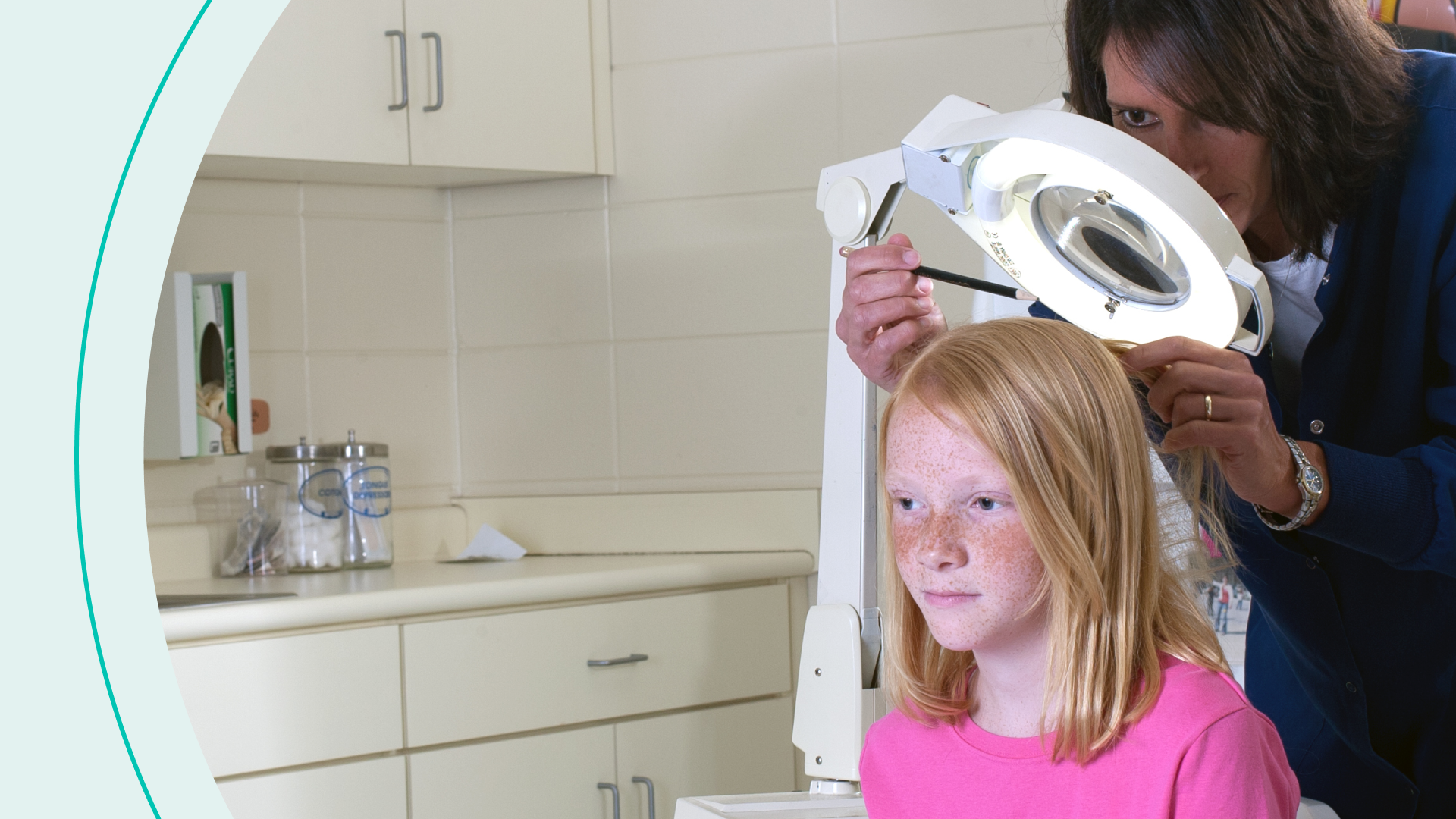Remember head lice screenings in elementary school? It was stressful. We’d wait in line hoping they didn’t find anything so we wouldn’t be shamefully sent home. But everything you thought you knew about head lice from childhood may be a lie (dramatic, much)?
Good news: Our kids may not have to go through that. The American Academy of Pediatrics (AAP) just released an updated report to make sure everyone knows that having head lice is NBD. And it shouldn’t be a reason for kids to miss school.
We busted some of the myths about head lice (using AAP data) so you can better understand what to do if your child ever does get them.
Myth: Head lice are a sign of poor hygiene
False. You can get head lice if you're clean, dirty, poor, or rich.
Infestation is most common among preschool children attending child care, elementary school children, and household members of infested children. The CDC says about 6 million to 12 million infestations occur each year in the US in kids 3 to 11 years old.
Myth: Head lice are dangerous
No. They’re more annoying than anything else. The most common symptom is itching. They’re not a public health hazard since they don’t spread any diseases.
Myth: Lice can jump from head to head
Nope. They can only crawl. *jaw drops in disbelief*
Head lice infestation most commonly spreads through direct contact with the hair of someone who has lice (we’re talking head-to-head contact). It’s very unlikely that your child will get lice by sharing personal belongings (think: combs, brushes, hats, and sport helmets). One study found live lice were found on only 4% of pillowcases used by people with lice.
PS: Head lice are specific to humans, so they can’t transfer between kids and pets.
Myth: Kids should be sent home from school if they have head lice
That’s a strong no, according to the AAP.
The AAP says there’s significant stigma associated with head lice infestations, and sending kids home from school only adds to that. Misinformation and mishandling of head lice in schools have led to “children and adolescents being ostracized from their schools, friends, and other social events,” saying head lice can be “psychologically stressful” to children who get it.
Whether intentional or not, kids with lice were singled out back when we were in elementary school. The AAP says educating people will reduce shame, disgust, and guilt often felt by kids with lice.
The AAP and National Association of School Nurses (NASN) are strongly against “no-nit” policies at schools. (FYI: Nits are lice eggs and empty shell casings).
The NASN says “no-nit” rules cause “unnecessary school absences for students and loss of parent workdays and family wages.” And missing school can have negative emotional, social, and academic impacts on students. Many parents are already concerned about their kids falling behind, as recent national test results showed the devastating impact the pandemic had on elementary school kids.
The AAP says “no-nit” policies could also “violate a child’s or adolescent’s civil liberties and are best addressed with legal counsel for schools.”
Plus, by the time you find live lice, they’ve probably been on the child’s head for 4-6 weeks (that’s how long it can take for itching to start), so the AAP’s take is that there’s no point in sending them home at that point anyway since it’s unlikely it’ll spread in the classroom.
Note: A kid with lice should stay at school but prevent close direct head contact with others.
Myth: Routine school screenings are the best way to catch head lice
Not really. The AAP says routine screenings aren’t cost-effective or necessary.
Finding nits doesn't necessarily mean there are live lice. And it’s possible to find nits even after treatment (or during it). Instead of school screenings, the AAP recommends parents check their kids for lice if they have itching.
Myth: Treating head lice is difficult and expensive
It shouldn’t be. There are shampoos, lotions, and other FDA-approved products you can get over-the-counter to treat head lice. Or prescription medication. Check with your pediatrician if you have questions or want to try a second medication (if the first one doesn’t work).
Pro tip: The CDC has good info on treating head lice and the different kinds of medications available.
My child’s school has a “no-nit” policy. What can I do?
School head lice policies are often determined by local school boards. You can try bringing up the topic at a school board meeting or reaching out to a school administrator. Local health departments may also have guidelines that address school head lice policies. Check with your local and state health departments to see if they have any recommendations.
Parents can challenge policies by sharing the CDC's information about head lice and nits and the AAP’s report.
If you think your child’s civil liberties (like privacy rights) have been violated, you can request legal help from your local ACLU affiliate. (Head’s up: ACLU assistance programs differ by state, and it may be a while before you hear back. But even if the ACLU can’t help with your request, they can provide legal resources).
theSkimm
Updated recs from the AAP may save current and future elementary school kids from going through head lice screenings or getting sent home if they have lice. Many of us can attest to how embarrassing and uncomfortable that process was when we were kids. But lice aren’t dangerous, they don’t spread easily in classrooms, and there are several easy treatment options.
Live Smarter
Sign up for the Daily Skimm email newsletter. Delivered to your inbox every morning and prepares you for your day in minutes.
